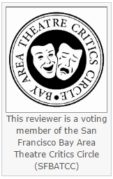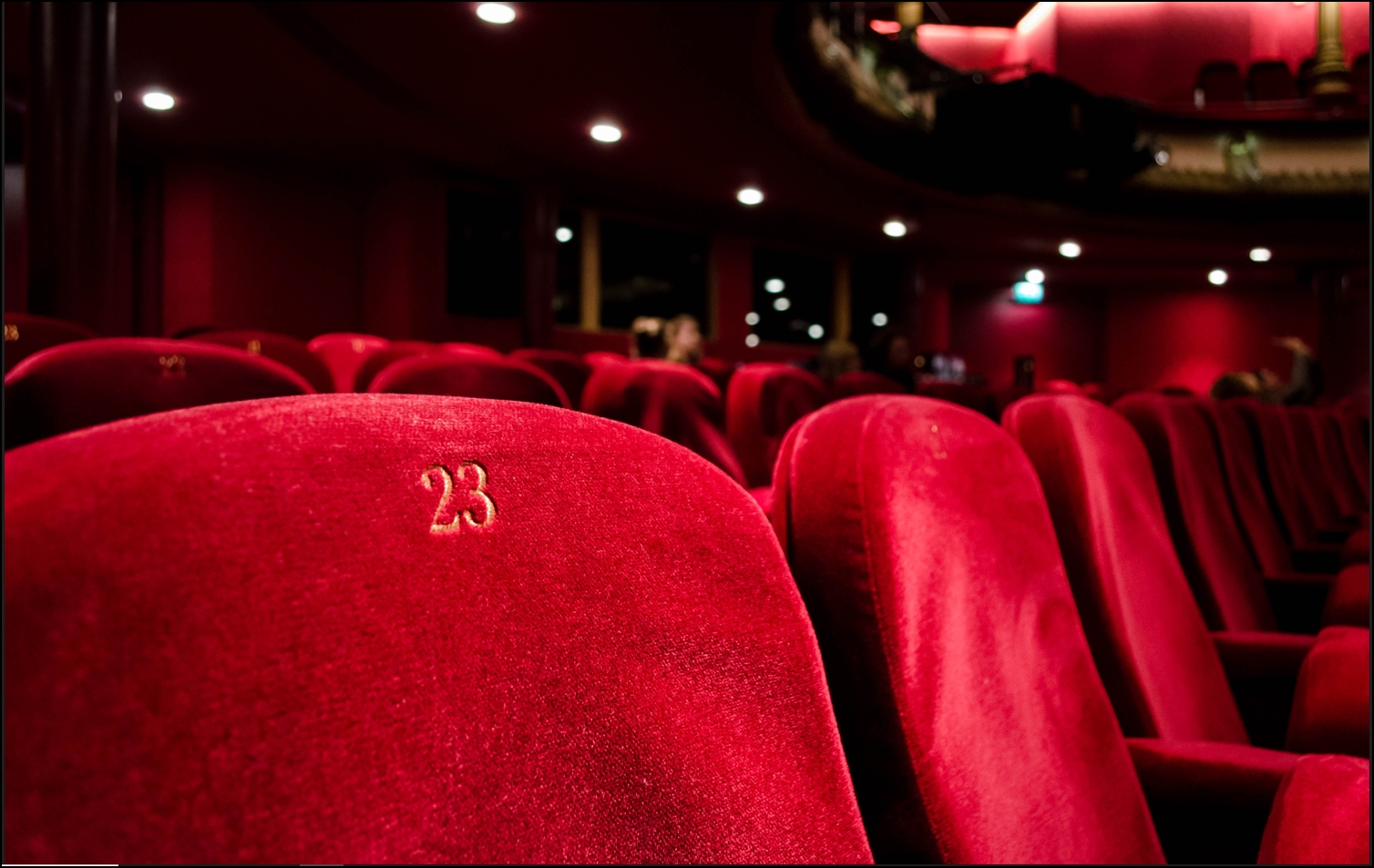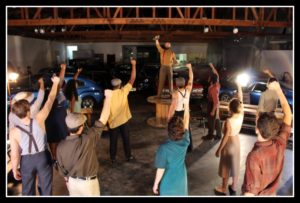 Cops and Robbers is an important piece of theater. As presented at The Marsh in Berkeley, CA, it is also raw, honest, and powerful, demanding more than just passive viewing. This is theater that challenges the audience, regardless of ethnicity, to honestly assess their perceptions—and assumptions—on race in America.
Cops and Robbers is an important piece of theater. As presented at The Marsh in Berkeley, CA, it is also raw, honest, and powerful, demanding more than just passive viewing. This is theater that challenges the audience, regardless of ethnicity, to honestly assess their perceptions—and assumptions—on race in America.
In Cops and Robbers, Mr. Jinho Ferreira plays 17 wildly different roles including a self-centered news reporter, a black activist, an amazingly comic white conservative talk show host, a judge, and a hyped-up police department sergeant. The plot of this 90-minute, one-man theater piece turns on the now all-too-familiar topic of an officer-involved shooting, with the host of characters morphing in and out of the show to tell the story from each person’s perspective.
To be fair, the production needs some minor editing/tightening, more consistent lighting, better microphone management, and a re-designed opening video montage that better engages the audience.
Yet, it is a damned important piece of theater, well rendered by an actor/playwright focused on asking essential questions through his writing, storytelling, and acting.
This reviewer left The Marsh not just liking, not merely appreciating, but actively respecting Mr. Ferreira and his work as a playwright and as an actor.
Each character in Cops and Robbers is the personification of an ethical viewpoint the playwright encountered growing up in West Oakland, CA. Mr. Ferreira’s insightful writing and bravura performance, goes where few American theater productions go by asking the audience a single, powerful, pervasive question: what will you do with your new knowledge, awareness, and insider view of topics many of us prefer to hear about in sanitized sound bites—if we want to hear about them at all.
This play takes on difficult topics—black-on-black crime, police officers’ use of force, American politics, the power of social media—and shows the audience how the people in these societal factions often do not speak the same language, value the same things, or make much of an effort to understand one another. Mr. Ferreira is trying to drill down to the essence—not the stereotypes or popular perceptions—of those who live on these cultural islands, which are informed by ideology, pride, power (real and imagined), tradition, money, influence, and pain.
Typically, a play review discusses what the production is about. I believe in this case it is equally important to discuss what this play and performance is not.
It is not:
- a politically-driven rant
- a Black Power endorsement wrapped in the lights, costumes, and imagery of the stage.
- an indictment of the power structure (whatever you deem that to be)
- anti-white or anti-black
- pro-black or pro-white
- a classically-trained actor exploiting the onslaught of shooting and police-in-the-news stories
- dumbed-down
Mr. Ferreira endeavors to go beyond right/wrong, white/black, yes/no and stereotypes to lead the audience beyond themselves to a new level of understanding; to see reality as it is and not as we think it is, or would like it to be.
This reviewer places lots of value on craft. As an actor, I applaud his work. As a writer, I’m amazed at the subtlety of his script. As a director, it would be an honor to work with a talent as powerful and singular as Jinho Ferreira. As an audience member who has experienced Mr. Ferreira’s craft and heard the messages of his play, my take-away—my responsibility—is to spread the word of this singular achievement.
If you like theater that supplies pat answers, this is not your show. If you like theater that asks you to think, that asks you to examine your perceptions, that urges and inspires you to act and be part of the solution then this is your show.
Cops and Robbers is that rarest of experiences: essential and important theater.
Cops and Robbers:
Directed by Ami Zins and Lew Levinson.
Written by Jinho “The Piper” Ferreira. A graduate of San Francisco State University, Ferreira, who describes himself as a self-taught actor and playwright, is also a musician, singer, father of three, and Alameda County Sherriff’s Deputy.
Mature content: appropriate for ages 15+.
Runs SATURDAY AFTERNOONS ONLY at 5:00 p.m. through October 3, 2015; dark on 9/19/15 at The Marsh Theater, 2120 Allston Way, Berkeley, CA.
Tickets available online at www.themarsh.org or by phone at 415.282.3055 1:00-4:00 p.m. Mon-Fri
Run time: 90 minutes with one intermission.
Rating: Four-and-a-Half out of Five Stars
 Kris Neely is a member of the San Francisco Bay Area Theater Critics Circle and a Theater Bay Area (TBA) Adjudicator.
Kris Neely is a member of the San Francisco Bay Area Theater Critics Circle and a Theater Bay Area (TBA) Adjudicator.
Mr. Neely’s blogs on theater and performing arts are found on Aisle Seat Review at www.AisleSeatReview.com and also on For All Events at www.ForAllEvents.com.
***** ***** ***** ***** *****





